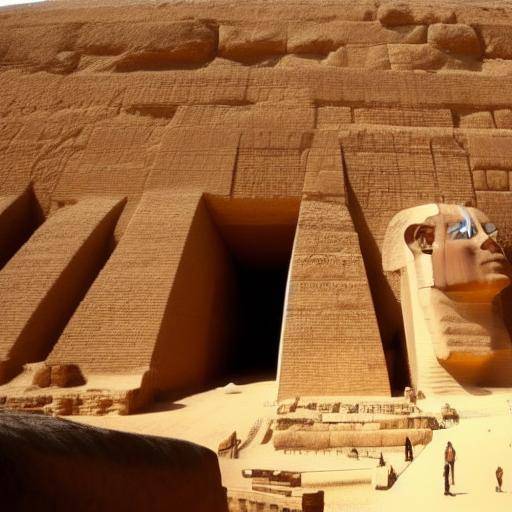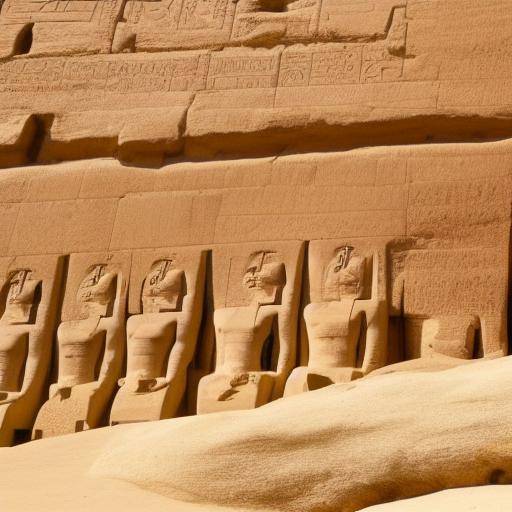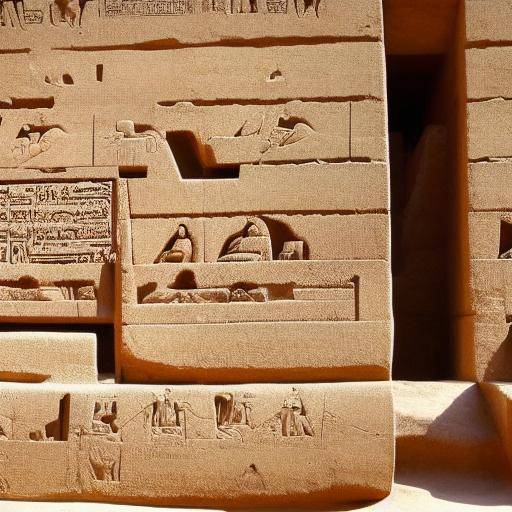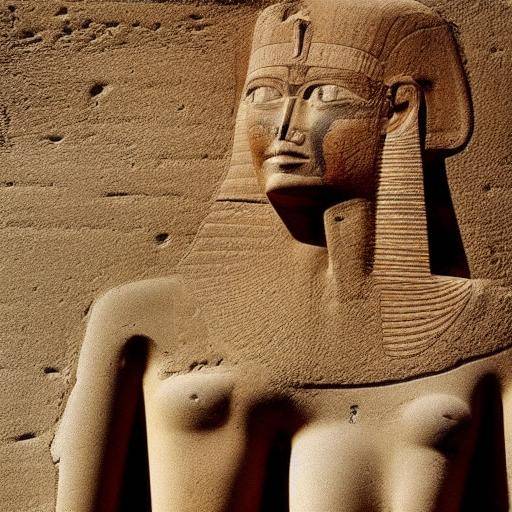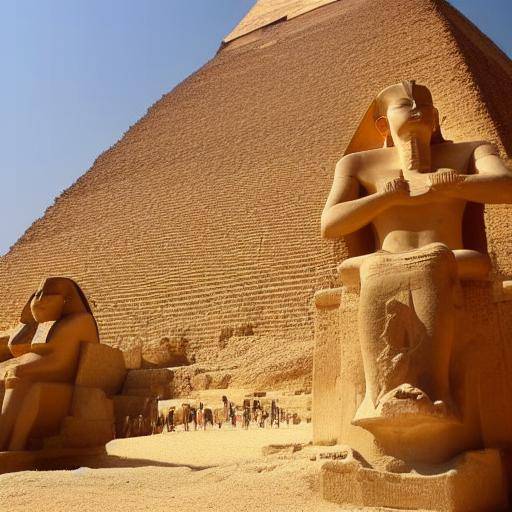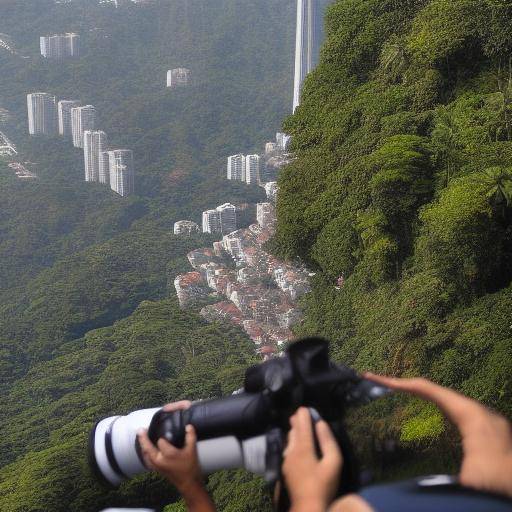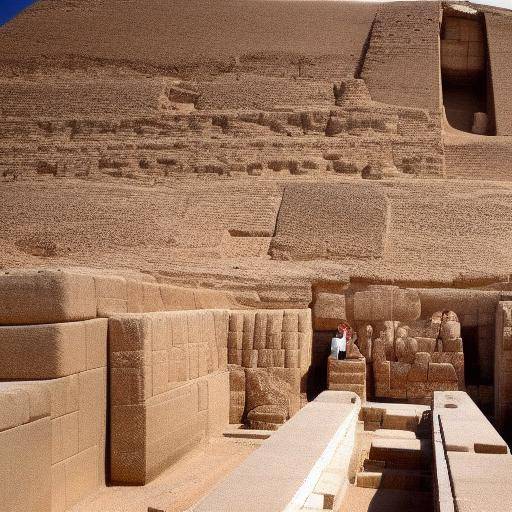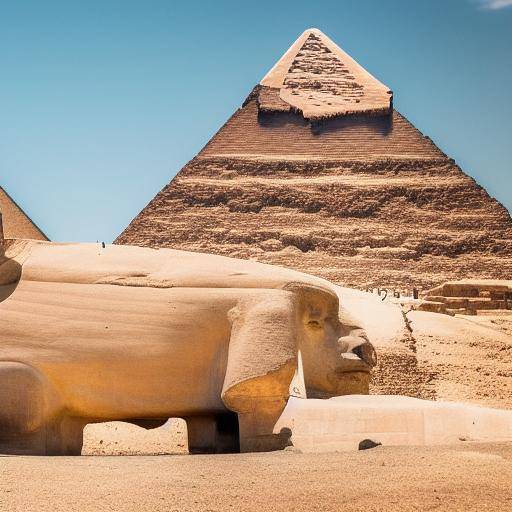
The Great Sphinx of Giza is one of the wonders of the ancient world that has captivated mankind for millennia. Capturing its splendor through photography is an exciting challenge that requires technical and creative skills. In this article, we will explore the techniques and tips to photograph the Great Sphinx of Giza, revealing its grandeur through the lens of a camera.
Introduction
The Great Sphinx of Giza is one of the most emblematic and enigmatic monuments of ancient times, located in the plateau of Giza, near Cairo, Egypt. With its colossal presence and mysterious smile, the Great Sphinx is an indispensable attraction for lovers of history, photography and archaeology.
In this article, we will discover the techniques to capture the majesty of the Great Sphinx through photography. From the right illumination to the stunning angles, we will explore the way to highlight the beauty and grandeur of this iconic monument. In addition, we will learn about the history and cultural significance of the Great Sphinx, providing an enriching context for any photographer who wishes to immortalize this monument in his images.
History and Background
The Great Sphinx of Giza has a rich and fascinating history that goes back to ancient Egyptian civilization. With a face that is believed to represent the Kafre pharaoh, this majestic structure has witnessed countless events throughout the millennia.
The Great Sphinx was sculpted in the limestone rock in the period of the Ancient Empire of Egypt, around 2500 BC. This colossus represents the fusion between humanity and nature, with its lion's body and Pharaoh's face. Over the centuries, the Great Sphinx has been the subject of numerous archaeological studies and restorations, revealing its secrets and riddles.
Evolution and Meaning
Over the years, the Great Sphinx has witnessed important historical transformations and events. From archaeological excavations to the preservation of its structure, its cultural and symbolic importance is unquestionable. The Great Sphinx remains an enigma, challenging those who try to unravel their original meaning and purpose.
The Great Sphinx of Giza has been a lasting symbol of the greatness and mysterious wisdom of ancient Egypt. Its imposing presence and mysterious appeal make it an evocative theme for the enthusiasts of photography. Capturing the essence and majesty of the Great Sphinx through photography is an exciting challenge that requires understanding and technique.
Anecdotes and Case Studies
Numerous stories and anecdotes surround the Great Sphinx, from local legends to historical accounts. These narratives add layers of meaning and mystery to this millennial monument, enriching our understanding of its cultural and spiritual relevance. In addition, archaeological and photographic case studies provide a detailed view of the Great Sphinx from different perspectives, offering inspiration and knowledge for those seeking to capture its essence through photography.
Analysis in Deep
The photography of the Great Sphinx of Giza offers a wide range of challenges and opportunities for photographers. From natural lighting to logistical complications, immortalizing the grandeur and majesty of the Great Sphinx requires technical and creative skills.
Benefits and Challenges
The Great Sphinx offers photographers the opportunity to capture an icon of antiquity, an architectural masterpiece that has resisted the passage of time. The possibility of playing with natural light and shadows, as well as experimenting with different angles, provides an exciting platform for artistic expression through photography. However, logistical challenges, such as crowds of tourists and access restrictions, may require careful planning and patience from the photographer.
Current trends
The photograph of monuments, including the Great Sphinx of Giza, has experienced a significant evolution in the digital era and the era of social networks. The ability to instantly share images through online platforms has redefined the way photographers face the capture and presentation of iconic monuments. Exploring current trends in monument photography can provide fresh insights on how to approach the Great Sphinx from a visual and technical point of view.
Comprehensive review
The photograph of the Great Sphinx not only involves the capture of a physical form, but also the evocation of its cultural and emotional significance. Exploring the practical applications of monument photography, such as the Great Sphinx, can illustrate how images can transcend the mere aesthetic, transmitting deeper messages about history and humanity.
Best Practices and Expert Perspectives
Gathering the opinions of experts in monument photography, archaeology and heritage conservation can enrich our understanding of best practices to capture the Greatness of the Great Sphinx through photography. In addition, exploring the potential of monument photography as an educational and outreach tool can offer valuable insights on how photographic art can contribute to the preservation and appreciation of our cultural heritage.
Comparative analysis
Compare the Great Sphinx with other famous antique monuments, such as the pyramids of Giza, can provide an enriching context to understand its relevance and uniqueness from a photographic point of view. The identification of similarities and differences between monuments can inspire new ideas and approaches to address the photography of the Great Sphinx, enriching the creative baggage of the photographer.
Practical Tips and Accessible Tips
Capturing the majesty of the Great Sphinx through photography may require a meticulous and creative approach. Some practical tips for photographers who wish to immortalize the Greatness of this monument include:
- Use different hours of the day to discover the best light to highlight the Great Sphinx.
- Experiment with creative angles to provide a unique perspective.
- Use surrounding elements, such as the desert or the sky, to frame the Great Sphinx dramatically.
- Consider the inclusion of human figures to provide a relative scale of the grandeur of the structure.
- Explore digital manipulation to add artistic effects or highlight specific details.
These practical advices and concrete actions can help photographers prepare to capture the Great Sphinx in an impressive and evocative way.
Conclusions
The Great Sphinx of Giza shines as a masterpiece of antiquity, challenging the passage of time and attracting photographers and enthusiasts from around the world. By exploring the techniques and tips to photograph this majestic creation, photographers can capture not only their physical form, but also their cultural significance and their lasting legacy.
By opening our vision to the greatness of the Great Sphinx through photography, we honor its transcendence in history and celebrate its perennial mystery. Photographing the Great Sphinx is not only an act of visual capture, but also a tribute to its eternity and to the human ability to create and transmit beauty over time.
FAQs (Frequently Asked Questions)
1. What is the story of Giza's Great Sphinx?
The Great Sphinx of Giza is an ancient statue of a mythological creature with a lion's body and human head. It is located on the plateau of Giza on the outskirts of Cairo, Egypt. It is believed that it was built during the reign of Pharaoh Kafre in the 20th century BC and has been the subject of numerous theories and research on its origin and meaning.
2. What is the cultural meaning of the Great Sphinx?
The Great Sphinx of Giza has been a lasting symbol of the greatness and mysterious wisdom of ancient Egypt. It represents the fusion between humanity and nature, with its lion body and the face of Pharaoh. His imposing presence has captured the imagination of generations and continues to be a source of inspiration and mystery.
3. What are the best lighting techniques to photograph the Great Sphinx?
Given its size and outdoor location, the Great Sphinx can present unique challenges related to lighting. Photographers can take advantage of the first hours of the morning or the last hours of the afternoon to capture a soft and warm light that enhances the details and highlights the texture of the limestone. Night photography with artificial lighting can also produce impressive results.
4. Is it necessary to obtain special permission to photograph the Great Sphinx?
While it is generally allowed to photograph the Great Sphinx from the areas designated for tourists, it is important to verify the regulations and restrictions on the site. Some specific areas or moments may require special permits or certain restrictions on the use of professional photographic equipment.
5. Are there special considerations to photograph the Great Sphinx with the background Keops pyramid?
The inclusion of the pyramid of Keops as a backdrop in the photographs of the Great Sphinx can add an additional dimension to the images. It is essential to consider the composition and balance between the elements to create an attractive and balanced image. Experimentation with different angles and distances can offer creative and visually impactful results.
6. What photo equipment is most suitable for capturing the Great Sphinx?
The choice of photographic equipment can depend on individual preferences and the desired style of photography. The DSLR or mirrorless cameras with variable focal lenses offer versatility to capture landscapes and details. In addition, the use of tripods can be beneficial to capture sharp images in different light conditions. It is essential to ensure additional batteries and memory cards for extended photo sessions.
With these frequent questions and detailed answers, readers can get a more complete understanding of the Great Sphinx and relevant considerations for your photography.
In conclusion, photographing the Great Sphinx of Giza is an exciting challenge that rewards the patience, creativity and understanding of its greatness and cultural significance. As you enter the vastness of your history and the depth of your symbolisms, photographers can discover a visual and narrative treasure that will endure over time.
By stopping to capture the majesty of the Great Sphinx through the lens of a camera, photographers contribute to the continuity of their legacy and the spread of their eternal mystery. The Great Sphinx, with its enigmatic smile, awaits to be immortalized in images that reflect its timeless grandeur.

